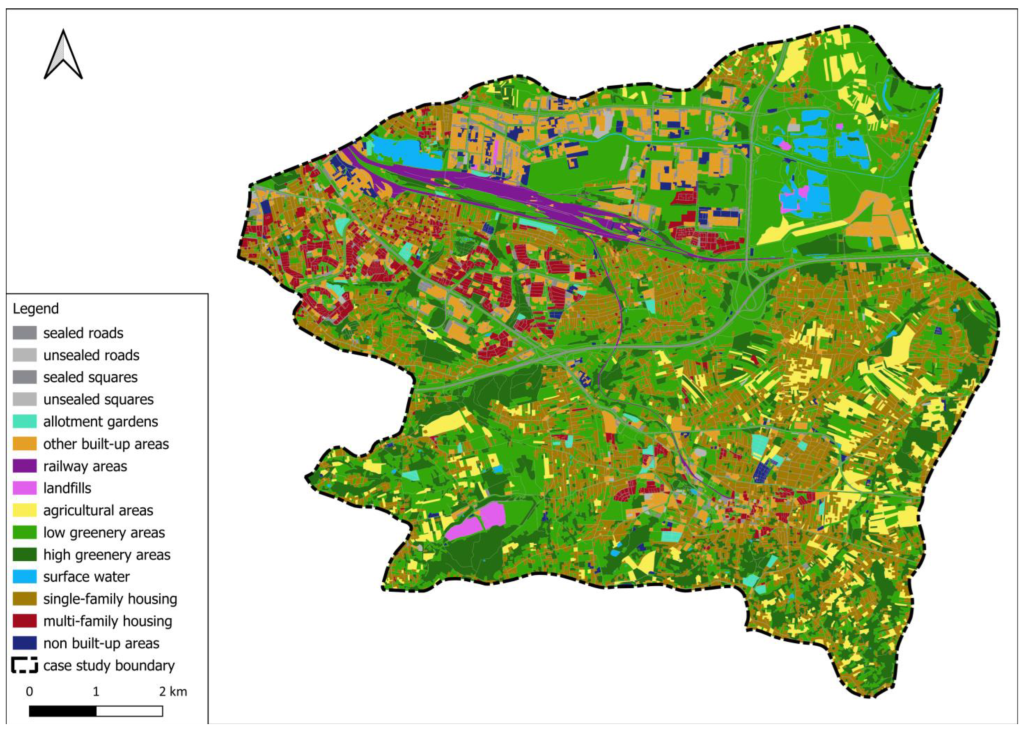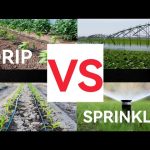Managing irrigation in flood-prone areas can feel like a daunting task. You might often wonder if it’s possible to strike a balance between too much and too little water.
The good news is, with the right strategies, you can transform this challenge into an opportunity for thriving crops and a flourishing landscape. Imagine the peace of mind knowing your crops are safe, your land is fertile, and you’re using water resources wisely.
You’ll discover practical tips and proven techniques that can make all the difference. Whether you’re an experienced farmer or new to agriculture, these insights will empower you to manage irrigation effectively, even in the most unpredictable environments. Ready to take control and ensure your land thrives, no matter the weather? Let’s dive in and explore how you can turn potential setbacks into a success story.

Assessing Flood Risks
Understanding flood risks is crucial for effective irrigation management. Floods can disrupt crop growth and damage soil quality. By assessing potential risks, farmers can prepare better strategies to protect their lands.
Identifying Flood-prone Areas
Know which areas are likely to flood. Check historical flood data and maps. Talk to local experts about flood patterns. This information helps in planning irrigation systems wisely.
Analyzing Soil Drainage Capacity
Soil drainage affects flood risk. Poorly drained soils hold water longer. Test soil drainage regularly. Use drainage tools to measure water absorption rates. Improve drainage with proper soil management.
Evaluating Weather Patterns
Weather patterns indicate flood risks. Monitor rainfall forecasts and seasonal changes. Sudden storms can lead to unexpected flooding. Stay informed about weather updates for better irrigation planning.
Considering Land Topography
Land shape influences water flow. Flat areas are more prone to flooding. Assess the slope and elevation of your land. Use this data to design effective water drainage systems.
Using Technological Tools
Technology aids in flood risk assessment. Use sensors to monitor water levels. Digital mapping tools provide detailed insights. These tools enhance the accuracy of flood predictions.

Selecting Appropriate Irrigation Systems
Selecting the right irrigation system is crucial in flood-prone areas. Focus on drainage solutions and water management to prevent crop damage. Consider systems that adapt to soil moisture levels and terrain.
Selecting the right irrigation system is crucial for managing water efficiently in flood-prone areas. The wrong choice can lead to water wastage, crop damage, or even contribute to flooding. By understanding the benefits and limitations of different systems, you can make informed decisions that protect both your crops and the environment.Understanding The Terrain
Start by assessing your land’s topography. Is it flat, hilly, or a mix of both? Different terrains require different irrigation strategies. For instance, flat lands might benefit from surface irrigation, while hilly areas may need drip systems to prevent runoff.Assessing Water Availability
Evaluate the water sources available to you. Are there natural water bodies nearby or do you rely on rainwater harvesting? Knowing your water availability helps determine the most efficient system. In my experience, having a backup water source can save your crops during unexpected dry spells.Drip Irrigation: A Precision Approach
Drip irrigation is ideal for flood-prone areas. It delivers water directly to the plant roots, minimizing water waste and reducing the risk of over-irrigation. This system is especially useful for sandy soils that drain quickly. Have you considered how drip irrigation can also help control weeds by keeping the spaces between plants dry?Sprinkler Systems: Versatility In Action
Sprinkler systems offer flexibility and can be adjusted to suit different crop types and growth stages. They mimic natural rainfall, which is beneficial for crops that thrive under such conditions. However, be cautious of using them in windy areas as the water distribution can become uneven.Using Sensors And Smart Technology
Integrating sensors and smart technology can make your irrigation system more efficient. These tools provide real-time data on soil moisture and weather conditions, allowing you to adjust water usage accordingly. Imagine the peace of mind knowing you’re not over-irrigating during a heavy rain forecast.Regular Maintenance And Monitoring
Once your system is set up, regular maintenance is key. Check for leaks, clogs, and any signs of wear and tear. I remember a time when a small unnoticed leak cost me a significant amount of water and resources. Consistent monitoring can prevent such losses and ensure your system runs smoothly. Choosing the right irrigation system involves more than just picking the latest technology. It’s about understanding your land, water resources, and the specific needs of your crops. Have you found the perfect balance in your irrigation strategy yet?Implementing Drainage Solutions
Managing irrigation in flood-prone areas requires effective drainage solutions. Install raised beds to prevent waterlogging. Use permeable materials for pathways to allow water absorption.
Implementing drainage solutions in flood-prone areas is crucial for effective irrigation management. Proper drainage ensures that water is directed away from your crops, reducing the risk of waterlogging and root damage. If you’ve ever struggled with soggy fields or unexpected floods, you know the importance of having a reliable drainage system.Assessing Your Land’s Natural Drainage
Understanding your land’s natural drainage patterns is the first step. Walk through your fields after a heavy rain to see where water pools or flows. This simple observation can help you decide where to focus your drainage efforts. Consider the slope of your land. Even gentle slopes can direct water flow. If your land is flat, you may need to create artificial slopes or channels.Installing French Drains
French drains are a practical solution for many farmers. They consist of a trench filled with gravel and a perforated pipe that redirects water away from your fields. You can install them along the perimeter of your fields or in areas where water tends to accumulate. This method is effective and relatively low-cost.Constructing Swales And Berms
Swales and berms can help manage water flow naturally. A swale is a shallow channel designed to redirect water, while a berm is a raised barrier that helps contain it. These structures can be integrated into the landscape to enhance both aesthetics and functionality. They work best when combined with vegetation to help absorb excess moisture.Utilizing Retention Ponds
Retention ponds can act as a temporary storage for excess rainwater. These ponds can prevent flooding by capturing runoff and releasing it slowly. They can also serve as a water source during dry periods. Ensure that they are properly lined and maintained to prevent leakage.Regular Maintenance Of Drainage Systems
No drainage system is set-and-forget. Regular maintenance is key to its effectiveness. Clear debris and check for blockages after major storms. Regularly inspect pipes and channels to ensure they are functioning properly.Evaluating The Impact On Crop Health
Once your drainage solutions are in place, monitor your crops closely. Notice any changes in growth patterns or root health. Well-drained soil can lead to healthier plants and better yields. Are your crops thriving after implementing these solutions? Taking the time to install and maintain proper drainage solutions can protect your crops and your investment. With these strategies, you’re not just managing water—you’re managing for success.
Monitoring And Adjusting Practices
Effective irrigation management in flood-prone areas demands constant observation. Adjust practices to suit changing conditions. Consider soil moisture and weather forecasts to prevent overwatering and reduce flood risks.
Managing irrigation in flood-prone areas can be a challenging task. The key lies in monitoring and adjusting practices to ensure that your crops receive the right amount of water without succumbing to excess moisture. This involves being vigilant and flexible in your approach, ready to adapt to the changing weather conditions and water levels. Here, we dive into practical tips on how you can effectively monitor and adjust your irrigation practices to thrive despite the challenges posed by potential flooding.Monitoring Water Levels
Keep a close eye on the water levels in your area. Use tools like rain gauges and soil moisture sensors to track how much water your land is receiving. These devices help you understand the existing moisture content, allowing you to make informed decisions on irrigation needs. Consider setting up an automated alert system that notifies you when water levels rise unexpectedly. This proactive measure keeps you ahead of potential flooding issues.Adjusting Irrigation Schedules
Flexibility is vital when managing irrigation in flood-prone areas. Adjust your irrigation schedules based on the latest weather forecasts and soil conditions. If heavy rain is predicted, reduce or pause your irrigation to prevent waterlogging. After a major rain event, assess the soil moisture before resuming regular irrigation. This prevents overwatering and helps maintain optimal soil health.Using Adaptive Irrigation Techniques
Explore innovative irrigation methods that allow quick adjustments. Drip irrigation systems, for instance, provide precise control over water distribution and can be easily modified based on current conditions. Flood irrigation might seem counterintuitive, but in some scenarios, it can effectively manage excess water by allowing it to spread evenly across the field. Have you tried using smart irrigation controllers? These devices adjust watering schedules automatically based on real-time weather data, ensuring your crops get just what they need.Regularly Inspecting Infrastructure
Infrastructure plays a crucial role in managing irrigation effectively. Regularly check your irrigation equipment, pipes, and drainage systems for any signs of wear or blockage. Ensure that drainage channels are clear and functional to prevent water accumulation. Have you thought about installing overflow valves? They can help redirect excess water away from your fields, minimizing flood risks.Engaging With Community Resources
Connect with local agricultural communities to share experiences and insights. Attend workshops or join online forums where farmers discuss their strategies for managing irrigation in flood-prone areas. Leverage collective knowledge and support to refine your own practices. Could collaborating with neighbors to develop joint flood management plans enhance your overall resilience? By actively monitoring and adjusting your irrigation practices, you can effectively navigate the challenges posed by flood-prone areas. These actionable tips not only protect your crops but also ensure sustainable farming practices.Conclusion
Managing irrigation in flood-prone areas requires careful planning. Regular monitoring helps prevent waterlogging. Adjust irrigation schedules based on weather forecasts. Use flood-tolerant crops to minimize damage. Maintain drainage systems for effective water flow. Install rain sensors to optimize water use.
Community collaboration enhances resource sharing and problem-solving. These steps help protect crops and improve yields. Proper irrigation management ensures sustainable farming practices. Stay informed and adapt to changing conditions. A proactive approach leads to successful farming in challenging environments.



